Nostalgic Revival of Performance Machines
The 1990s stand as a golden age that ignited the passions of driving enthusiasts around the world. An era marked by exhilarating power, cutting-edge design, and the sheer thrill of the open road, the '90s produced a lineup of performance cars that continue to captivate our imaginations.
From the sleek and aerodynamic silhouettes to the unmistakable growl of their engines, these iconic vehicles not only defined an era but also left an industry-wide enduring legacy.
Join us as we journey back in time to relive the exhilarating moments and pay homage to the fantastic '90s performance cars that have etched themselves into our collective memory.
Related Reading: Hidden Gems: 13 Classic and Modern Cars You Didn't Know Exist
1. Best ‘90s Performance Car: Lexus SC300
- Production Years: 1991–2000
- Horsepower: 225 HP
- Top Speed: 155 MPH
- 0-60 MPH Acceleration: 7.5 Seconds
- Used Price: $13,130 Average Price (Via Edmunds)
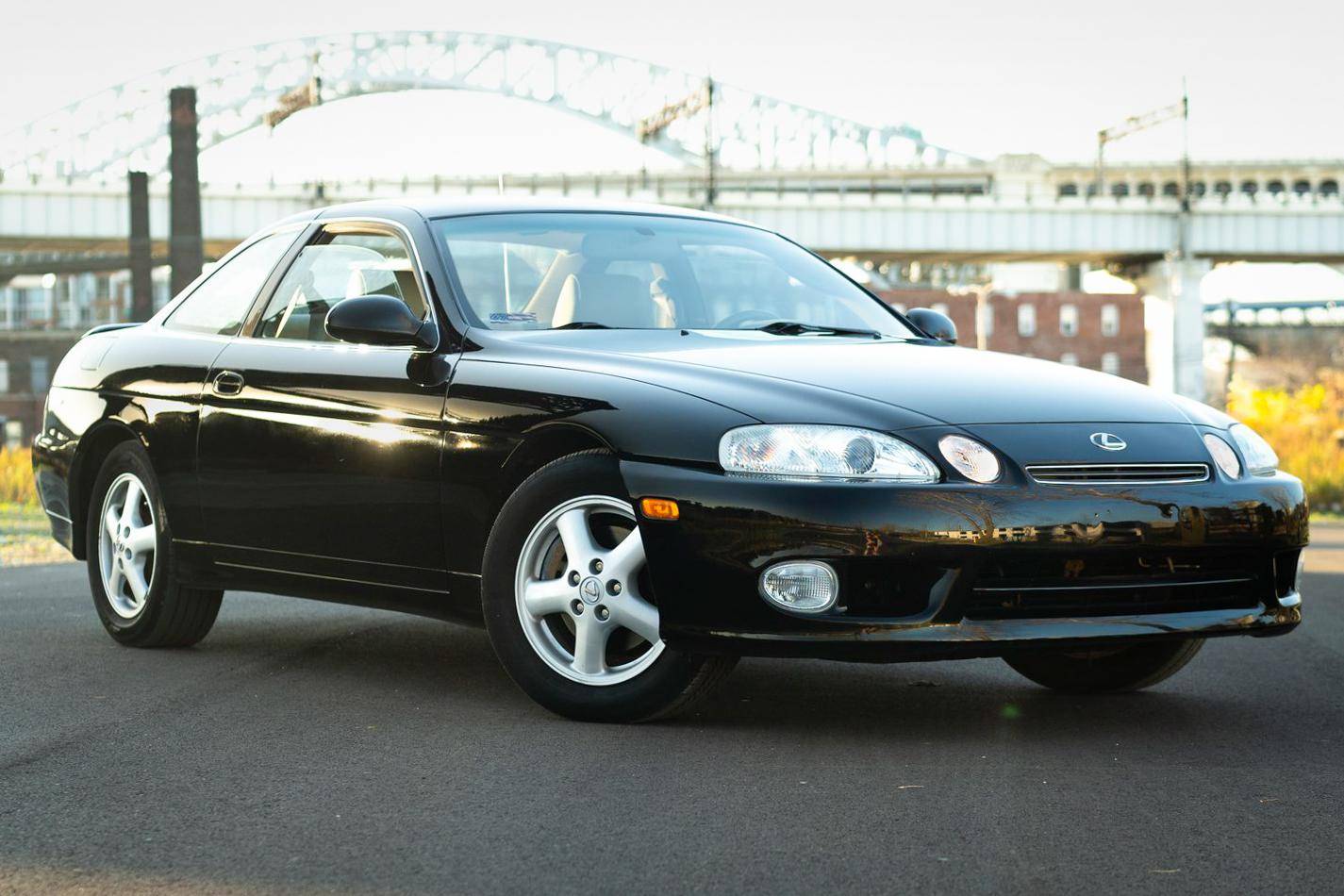
The Lexus SC300 was a luxury sports coupe produced by Lexus, the luxury vehicle division of Toyota, from 1991 to 2000. As a performance-oriented model, the SC300 offered a blend of comfort, refinement, and sportiness. Here's an overview of its performance characteristics:
The Lexus SC300’s Engine
The SC300 flaunted a 3.0-liter inline-six engine known for its smoothness and reliability. It produced 225 horsepower and 210 lb-ft of torque. The engine featured dual overhead camshafts (DOHC) and variable valve timing (VVT-i), contributing to its linear power delivery and decent low-end torque.
Lexus SC300’s Acceleration And Speed
The SC300 offered a respectable performance in terms of acceleration. It could accelerate from 0 to 60 mph in around 7.5 seconds, which was reasonably quick for its time. The top speed was electronically limited to 155 mph, which was impressive for a luxury coupe.
Lexus SC300’s Transmission
A five-speed automatic transmission was the standard offering for the SC300. It provided smooth gear changes to enhance the overall driving experience. However, a manual transmission option was not available for the SC300 in most markets.
Lexus SC300’s Handling And Suspension
The SC300 featured a well-balanced suspension system designed for comfort and sportiness. It had an independent double-wishbone suspension setup at the front and rear, which helped deliver a smooth ride while maintaining stability during spirited driving.
The car's low center of gravity and well-tuned chassis contributed to nimble handling and responsive steering.
Lexus SC300’s Braking
The SC300 came with four-wheel disc brakes for reliable stopping power. Anti-lock braking system (ABS) was standard to enhance control and stability during emergency braking situations.
Lexus SC300’s Fuel Efficiency
Considering its performance-oriented nature, the SC300 offered decent fuel efficiency for its class. It achieved an average of around 18-20 mpg in city driving and 23-25 mpg on the highway, depending on driving conditions and individual driving habits.
2. Best ‘90s Performance Car: Dodge Stealth
- Production Years: 1991–1996
- Horsepower: Up To 300 HP
- Top Speed: 155 MPH
- 0-60 MPH Acceleration: 5.5 Seconds
- Used Price: $15,016 Average Price (Via Edmunds)
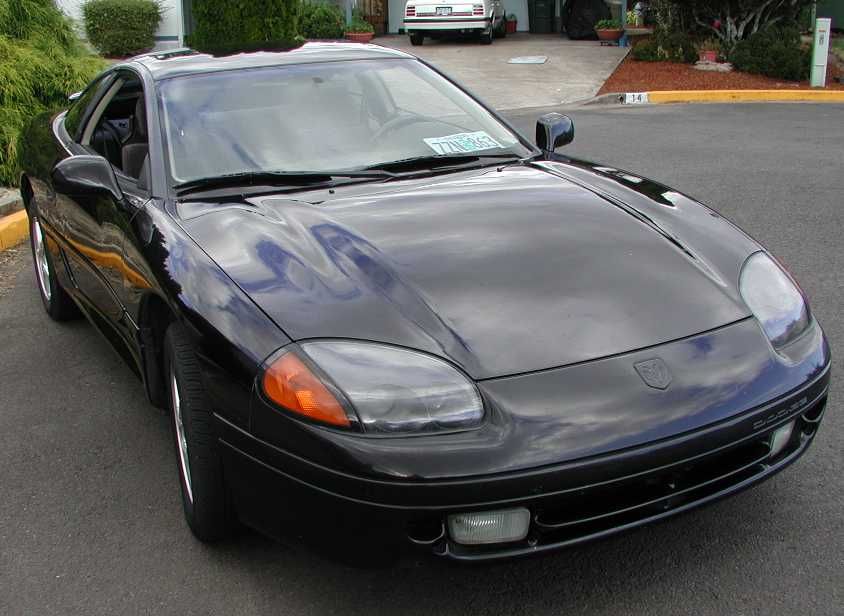
The Dodge Stealth was a sports car produced by the Dodge division of Chrysler Corporation in collaboration with Mitsubishi Motors. It was manufactured from 1991 to 1996 and shared many components with its sister car, the Mitsubishi 3000GT.
Let’s check out the Dodge Stealth’s performance characteristics that earned it recognition as “the most advanced American car of its time.”
The Dodge Stealth Engine Options
The Dodge Stealth came with a range of engine options that offered a variety of performance levels to suit different preferences. The base model featured a 3.0-liter V6 engine producing 164 horsepower and 185 lb-ft of torque.
However, the top-of-the-line Stealth R/T Turbo model boasted a 3.0-liter twin-turbocharged V6 engine, generating an impressive 300 horsepower and 307 lb-ft of torque. The turbocharged engine delivered strong acceleration and thrilling performance.
The Dodge Stealth Acceleration And Speed
The Dodge Stealth’s performance varied depending on the engine and trim level. The base model with the 164 horsepower engine could accelerate from 0 to 60 mph in around 8 seconds, while the more powerful R/T Turbo model achieved the same feat in approximately 5.5 seconds.
The Stealth R/T Turbo’s top speed was electronically limited to 155 mph.
The Dodge Stealth’s Transmission
A five-speed manual transmission was standard on the Dodge Stealth, while a four-speed automatic transmission was available as an option for those preferring automatic gear changes.
The Dodge Stealth Drivetrain
Among the Dodge Stealth’s notable features was its all-wheel drive (AWD) system. This AWD system, known as All-Wheel Drive Control (AWC), provided enhanced traction and stability, particularly in adverse weather conditions and during spirited driving.
It distributed power to all four wheels, improving grip and cornering performance.
The Dodge Stealth’s Handling And Suspension
The Dodge Stealth featured a sport-tuned suspension system, which combined independent suspension at all four corners with electronic adjustable damping.
This setup allowed for a comfortable ride when desired while also offering improved handling and responsiveness during aggressive driving. The precise steering and well-balanced chassis contributed to the car's agility and cornering capabilities.
The Dodge Stealth’s Braking
The Dodge Stealth came equipped with four-wheel disc brakes, providing strong and reliable stopping power. Anti-lock braking system (ABS) was available as an option to enhance control and stability during emergency braking situations.
The Dodge Stealth’s Fuel Efficiency
The Dodge Stealth's fuel efficiency was moderate for a performance-oriented sports car. The exact fuel economy varied depending on the engine, transmission, and driving conditions. On average, it achieved around 16-20 mpg in city driving and 22-26 mpg on the highway.
Related Reading: Top 5 Fantastic ‘90s Performance Cars We Will Never Forget (And Neither Should You)
3. Best ‘90s Performance Car: Lotus Elan (M100)
- Production Years: 1989–1995
- Horsepower: 162 HP
- Top Speed: 137 MPH
- 0-60 MPH Acceleration: 6.5 Seconds
- Market Valuation: Up To $32,480 (Via ConceptCarz)
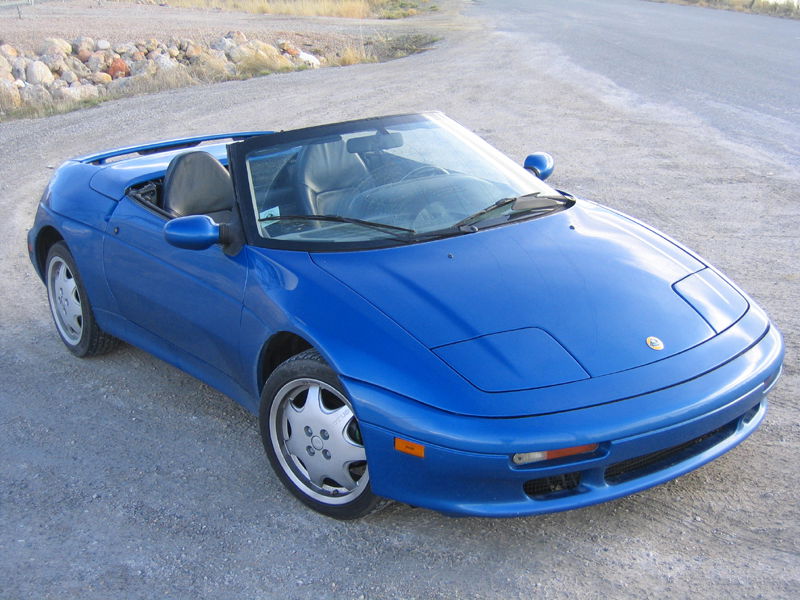
The Lotus Elan (M100) is a two-seater sports car produced by Lotus Cars from 1989 to 1995. It is known for its lightweight construction, excellent handling, and turbocharged engine. Here's an overview of the performance characteristics of the Lotus Elan (M100):
The Lotus Elan (M100)’s Engine
The Lotus Elan (M100) got powered by a 1.6-liter turbocharged inline-four engine developed in collaboration with Isuzu.
The engine featured dual overhead camshafts (DOHC) and produced 162 horsepower and 166 lb-ft of torque. The turbocharged setup provided strong low-end torque and responsive power delivery throughout the rev range.
The Lotus Elan (M100)’s Acceleration And Speed:
Thanks to its lightweight construction and turbocharged engine, the Lotus Elan (M100) offered impressive acceleration. It could sprint from 0 to 60 mph in around 6.5 seconds, making it one of the quickest cars in its class during its production years.
The top speed was electronically limited to approximately 137 mph.
The Lotus Elan (M100)’s Transmission
The Elan (M100) came with a five-speed manual transmission as standard. The gearbox offered precise and short throws, enabling quick and smooth gear changes. Additionally, a four-speed automatic transmission was available as an option for those who prefer automatic shifting.
The Lotus Elan (M100)’s Handling and Suspension
One of the standout features of the Lotus Elan (M100) was its exceptional handling. It featured a front-wheel-drive layout, which was unconventional for Lotus sports cars at the time.
The Elan (M100) utilized a sophisticated suspension system with independent double-wishbone setups at both the front and rear. This setup, combined with Lotus' expertise in chassis engineering, resulted in superb handling characteristics, precise steering, and excellent road grip.
The Lotus Elan (M100)’s Braking
The Lotus Elan (M100) was equipped with four-wheel disc brakes, offering strong and reliable stopping power. Anti-lock braking system (ABS) was available as an option for enhanced control and stability during emergency braking situations.
The Lotus Elan (M100)’s Convertible Design
The Elan (M100) was available exclusively as a power-operated soft-top convertible. The convertible design added to the car's visual appeal and brought drivers the freedom to enjoy open-top motoring.
The Lotus Elan (M100)’s Fuel Efficiency
The Lotus Elan (M100) offered decent fuel efficiency for a sports car of its time. It achieved an average of around 20-24 mpg in city driving and 28-32 mpg on the highway, depending on driving conditions and individual driving habits.
4. Best ‘90s Performance Car: BMW M5 (E34)
- Production Years: 1988–1995
- Horsepower: 335 HP
- Top Speed: 155 MPH
- 0-60 MPH Acceleration: 6 Seconds
- Market Valuation: Up To $17,492 (Via ConceptCarz)
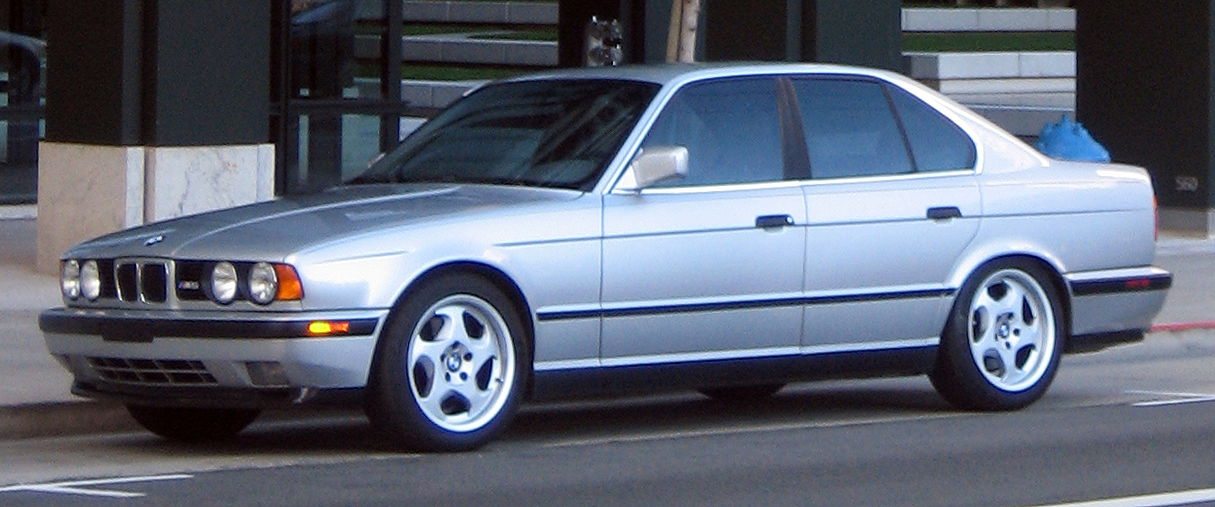
The BMW M5 (E34) is a high-performance luxury sedan that BMW produced from 1988 to 1995. It is the second generation of the BMW M5 series and often got praised as one of the most iconic and influential sports sedans of its time. Here is a performance overview of the BMW M5 (E34):
The E34 M5’s Engine
The E34 M5 got motivation from a 3.6-liter inline-six engine in the early models, which later increased to a 3.8-liter engine. The engine features BMW's advanced valve timing technology, VANOS, which helps optimize performance at various engine speeds.
The power output ranges from approximately 311 to 335 horsepower, depending on the model and engine variant.
The E34 M5’s Acceleration And Top Speed
The BMW M5 (E34) delivers impressive acceleration performance for its time. The 0-60 mph sprint can be achieved in around 6 seconds, while the top speed is electronically limited to 155 mph, although some models had an optional limiter removal, allowing for higher speeds.
The E34 M5’s Transmission
The E34 M5 initially came with a 5-speed manual transmission, which was later upgraded to a 6-speed manual gearbox. The transmission is known for its precise and smooth shifting, providing an engaging driving experience.
The E34 M5’s Handling And Suspension
The M5 (E34) features a sport-tuned suspension system supporting excellent handling capabilities. The well-balanced chassis provided a stable and responsive driving experience, whether in straight-line acceleration or cutting through corners.
The car also comes with various performance-enhancing features, such as a limited-slip differential and sport-tuned steering, further improving its agility and driver control.
The E34 M5’s Braking
The M5 (E34) used a high-performance braking system that provides strong and consistent stopping power. It features ventilated disc brakes on all four wheels, coupled with an effective ABS (Anti-lock Braking System) for enhanced safety and control.
The E34 M5’s Interior And Comfort
Despite its sporty nature, the BMW M5 (E34) offered a luxurious and comfortable interior. The cabin features high-quality materials, supportive seats, and a range of amenities, including power-adjustable seats, climate control, and a premium sound system.
The E34 M5’s Legacy And Impact
The BMW M5 (E34) earned massive respect for its combination of performance, luxury, and practicality. It set a benchmark for sports sedans and helped establish the M5 series as an iconic nameplate in the automotive industry to this day.
The E34 M5’s influence can still be seen and experienced in modern-day M5 models.
5. Best ‘90s Performance Car: Nissan Pulsar GTI-R
- Production Years: 1990–1994
- Horsepower: 227 HP
- Top Speed: 140 MPH
- 0-60 MPH Acceleration: 5.4 Seconds
- Used Price: $35000–$40,000 Average Price (Via Carsales)
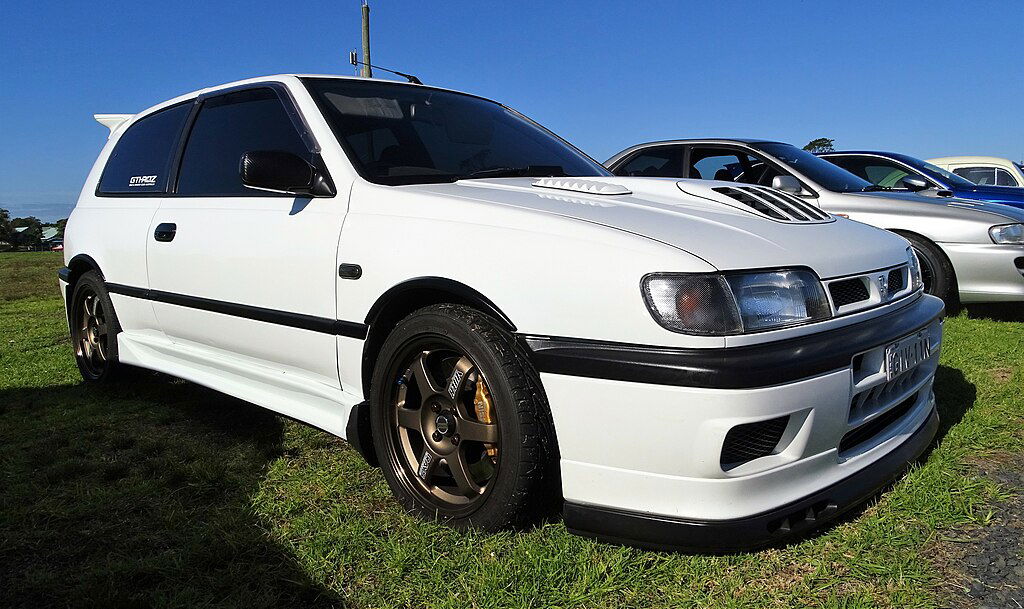
The Nissan Pulsar GTI-R, also known as the Nissan Sunny GTI-R in some markets, is a high-performance hatchback produced by Nissan from 1990 to 1994.
Designed as a homologation model for rally racing, the GTI-R is known for its impressive performance and handling. Here is a performance overview of the Nissan Pulsar GTI-R:
Nissan Pulsar GTI-R’s Engine
The Pulsar GTI-R got its propulsion power from the famous SR20DET turbocharged 2.0-liter inline-four engine. This SR20DET is capable of producing around 227 horsepower and 210 lb-ft of torque.
It features an intercooled turbocharger and advanced fuel injection technology, providing strong and responsive power delivery.
Nissan Pulsar GTI-R’s Acceleration And Top Speed
The GTI-R’s swift acceleration was evident in its 0-60 mph sprint in approximately 5.4 seconds, while its top speed was electronically limited to around 140 mph. In other words, the Pulsar GTI-R was – and still is – a quick and agile hatchback.
Nissan Pulsar GTI-R’s Transmission
The Pulsar GTI-R comes with a 5-speed manual transmission, well-matched to the engine's power characteristics. The transmission offers precise and smooth shifting so the driver can fully exploit the car's performance potential.
The Nissan Pulsar GTI-R’s Drivetrain
The GTI-R’s advanced all-wheel-drive (AWD) system was one of its standout features. The all-wheel drivetrain offers exceptional traction and stability, especially in challenging road conditions.
It enhances the car's handling and contributes to its impressive performance capabilities.
Nissan Pulsar GTI-R’s Handling And Suspension
The GTI-R features a sport-tuned suspension system with MacPherson struts at the front and a multi-link setup at the rear.
This setup, combined with its advanced AWD system and responsive steering, supports excellent cornering capabilities and precise control. The car is known for its nimble and agile handling characteristics that make it a joy to drive on twisty roads.
Nissan Pulsar GTI-R’s Braking
The Pulsar GTI-R features a capable braking system that includes ventilated disc brakes on all four wheels. The brakes provide strong and consistent stopping power, ensuring confident deceleration when needed.
Nissan Pulsar GTI-R’s Remarkable Weight And Size
The GTI-R is relatively lightweight for a performance car of its time, which contributed to its agility and performance. The 1990 Pulsar GTI-R measured 55.12 inches tall, 66.54 inches wide, 156.5 inches long, and weighed less than 2,700 lbs.
Its compact size and hatchback body style make it maneuverable and practical for everyday use.
Nissan Pulsar GTI-R’s Rally Heritage
Developed for Group A rally racing, the Pulsar GTI-R achieved considerable success in motorsport. Its rally-inspired design cues, such as the aggressive body kit and hood scoop, pay homage to its racing pedigree.